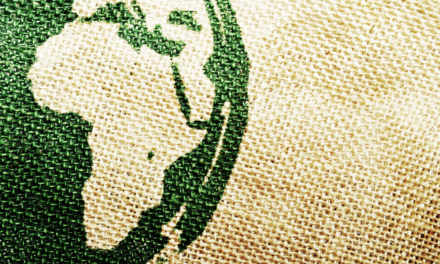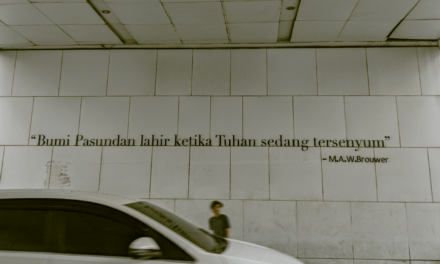By Nicola Bullard*
Ibrahim Assad welcomes us to his stone house in Taybeh, a small village outside Jenin in the West Bank, saying he is as old as Israel. “I was born in 1948 and married in 1973, the year of the Yom Kippur war. In all these years, nothing has changed for the Palestinians, but this is the first time that we have ears to hear our problems. This is the first time we have shared our pain with the world.”
For Ibrahim, the pain has entered the heart of his family. Sitting next to him, on a low mattress, is the son of his wife’s brother – Mohammed, a thirty-five year old spray painter from Jenin Refugee Camp. Mohammed’s wife, Amira, is just 24 and they have three small children aged seven, four and one. They are close and quiet but the four-year old can’t help smiling shyly at this strange group of foreigners who have come to hear their story.
THE DAY THE BULLDOZERS CAME
Mohammed begins. About two weeks ago in the early evening, Israeli Defence Force Apache helicopters attacked without warning, launching missiles and shooting into the densely populated “refugee camp” which is now the permanent home for more than 13,000 Palestinians.
In the panic, Mohammed and his family fled to one of the underground caves typical of the region, along with hundreds of others. They took no food or water but were luckier than many others who ran for their lives without a chance to gather their children or other family members. For four days, 50 families lived in the hot, crowded and dark cave. They did not know what was happening, hearing only the sounds of shooting, bombs and the roar of tanks and bulldozers. Some decided to leave, preferring to take their chances in the open than die in a cave. After five days, the shooting and the bulldozing stopped and most decided to leave the cave. An elderly couple stayed behind. No one knows their fate.
Somehow Mohammed and Amira made it to the village of their uncle, but they have been unable to contact their own parents, brothers, and sisters. But they are luckier than most because their small family is together.
Just two kilometers away, the Altaybeh Basic Boys School is the temporary home for more than 200 men. They are also from the Jenin Refugee Camp and have no idea of the fate of their wives and children. Ten are willing to speak to the foreigners and start by telling us the same story of missiles and shooting; one man counted 51 missiles in an hour. They saw houses with women and children inside flattened by bulldozers and soldiers shooting young men as they walked towards the tanks with white flags and arms raised. One youth describes how he was arrested, forced to strip to his underpants and then, for two days, used as a “human shield” by the Israeli soldiers as they went from house to house. Many of these men were arrested by the army, blindfolded and their hands tied. They were not allowed to go to the toilet, they were insulted, beaten and tortured, and left without food and water. Several had clearly visible scars and injuries, caused by handcuffs, cigarette burns and beating. After four or five days, they were released by the military, without papers and many without clothes, in the middle of a curfew and with orders not to return to Jenin Camp. At a nearby mosque another 490 men with similar stories have also found food, clothes and shelter, but they have not found their families.
FRUSTRATION AND FEAR ON ALL SIDES
The pain that Ibrahim Assad speaks of is visible on the faces of all the people we meet. The old woman with bright blue eyes who tells us about the afternoon an Israeli tank ploughed down the steep path to her house bringing soldiers who pushed all the women and children into a room while they searched the house. The thin, middle-aged man bent double in pain and grief unable to speak of his ordeal. But what is even more striking – after four short days in Jerusalem and the West Bank – is the resilience of the Palestinians and their absolute determination to resist the occupation and to fight for their land: a determination that seems equaled only by Israel’s determination to fight for a secure home for the Jewish people.
The Israeli people, too, are desperate. Hundreds have been killed by suicide bombs and polls show that 75 per cent of Israelis support “Operation Defensive Shield.” And yet, in the same poll, almost 60 per cent said they would support a unilateral withdrawal from the territories, more than 50 per cent support the Saudi Arabia peace proposal and 55 per cent agree that there should be a Palestinian state. Last Saturday, 3,000 Israeli and Arab peace activists marched to the Jenin Refugee Camp checkpoint escorting a convoy of trucks carrying food and water, medical supplies, clothes and blankets. Others hold peace vigils outside the homes of prime minister Ariel Sharon and foreign affairs minister Shimon Peres.
Amazingly, and in spite of the myth supported by Sharon that the state of Israel itself is under threat by the Palestinians, the self-censorship of the media and the totally pervasive state security apparatus, there is still common ground for peace between Israelis and Palestinians. Almost everyone agrees that the solution is to establish a Palestinian state according to the 1967 boundaries, but getting from here to there appears impossible and the forces involved, intractable.
THE NEW INTERNATIONALISM
Amjel Kazim, an insurance salesman who has been trapped in his fiance’s house 200 meters from the Palestinian Authority headquarters in Ramallah since 29 March, told us that things have never been so hard. “We see everything on the television,” he said, “but no one is doing anything.”
But, in the next breath, he thanked us for being in Ramallah, for proving to the world that he still exists and that his dream to “live in peace in my land” still burns.
In the past months hundreds of international civilians have gone to the Occupied Territories, digging up Israel Defence Force road blocks, observing checkpoints, re-planting hundreds of hectares of olive groves destroyed with chainsaws by settlers and living with communities to provide one additional thin layer of protection from harassment and arrest by the Israeli authorities.
The fact that hundreds of foreigners have taken these risks is not simply old-fashioned solidarity. Nor is it a modern day version of the partisan international brigades of the Spanish civil war or the Nicaraguan revolution. It is, I think, an expression of total frustration at the inability of our governments to deal with the political and humanitarian crisis of Israel and the Occupied Territories: a crisis which is the fulcrum of international peace and security and which exemplifies the global crisis of democracy and justice.
Beyond the possibility of physical protection, solidarity and witness, though, the international civilian presence links the Palestinians and Israelis with the larger, diverse and dynamic international movement — the “anti-globalisation” movement — which is insisting that there is another way to do politics, that another world is possible. In Palestine, the global anti-globalisation movement, the peace movement and solidarity organisations, have a chance to work together in a situation that demands our attention.
The political outlook is grim. US secretary of state Colin Powell’s leisurely tour of the Mediterranean and his bland proposal for a regional conference at which Palestinian Authority president Yassir Arafat’s presence is “not indispensible” suggests that, in spite of the hard evidence of human rights violations by the Israeli state and its continued occupation of the Palestinian territories, the political calculus that shapes the future of the region is based on a cynical assessment of US interests.
We may have eyes to see Ibrahim Assad’s pain and ears to hear his story, but unless we can shift the greatest obstacle to the solution — US political and economic interests — we may as well be deaf and blind.
* Nicola Bullard works with Focus on the Global South. She was in Jerusalem and the West Bank with the International Civil Mission for the Protection of the Palestinian People.








